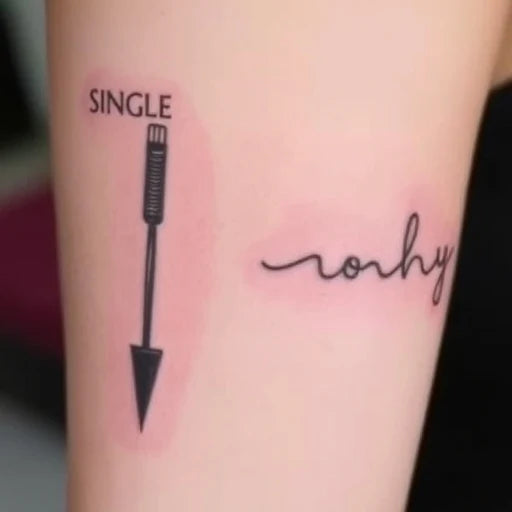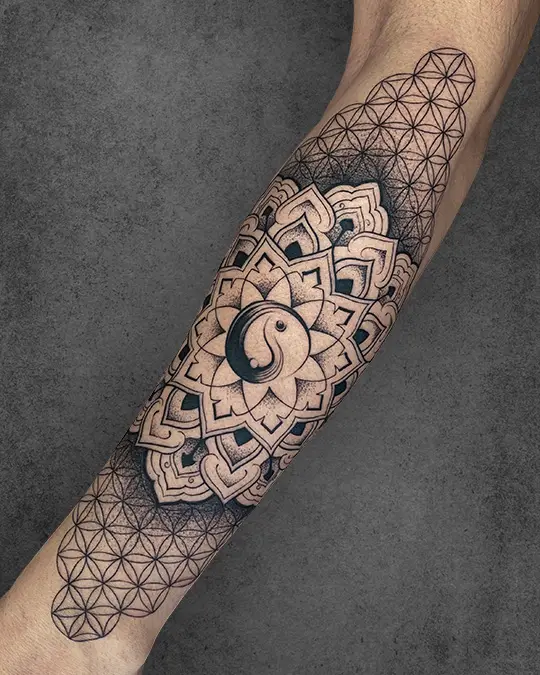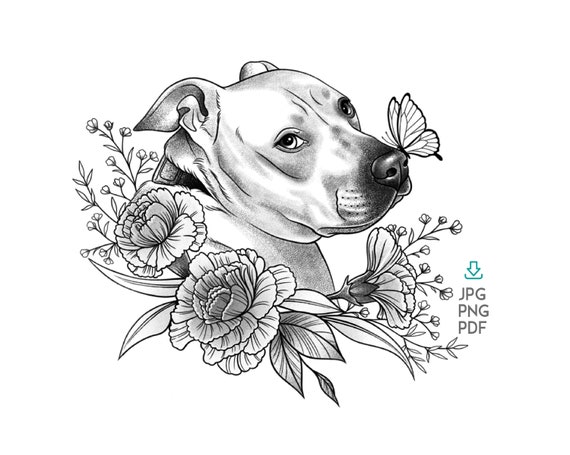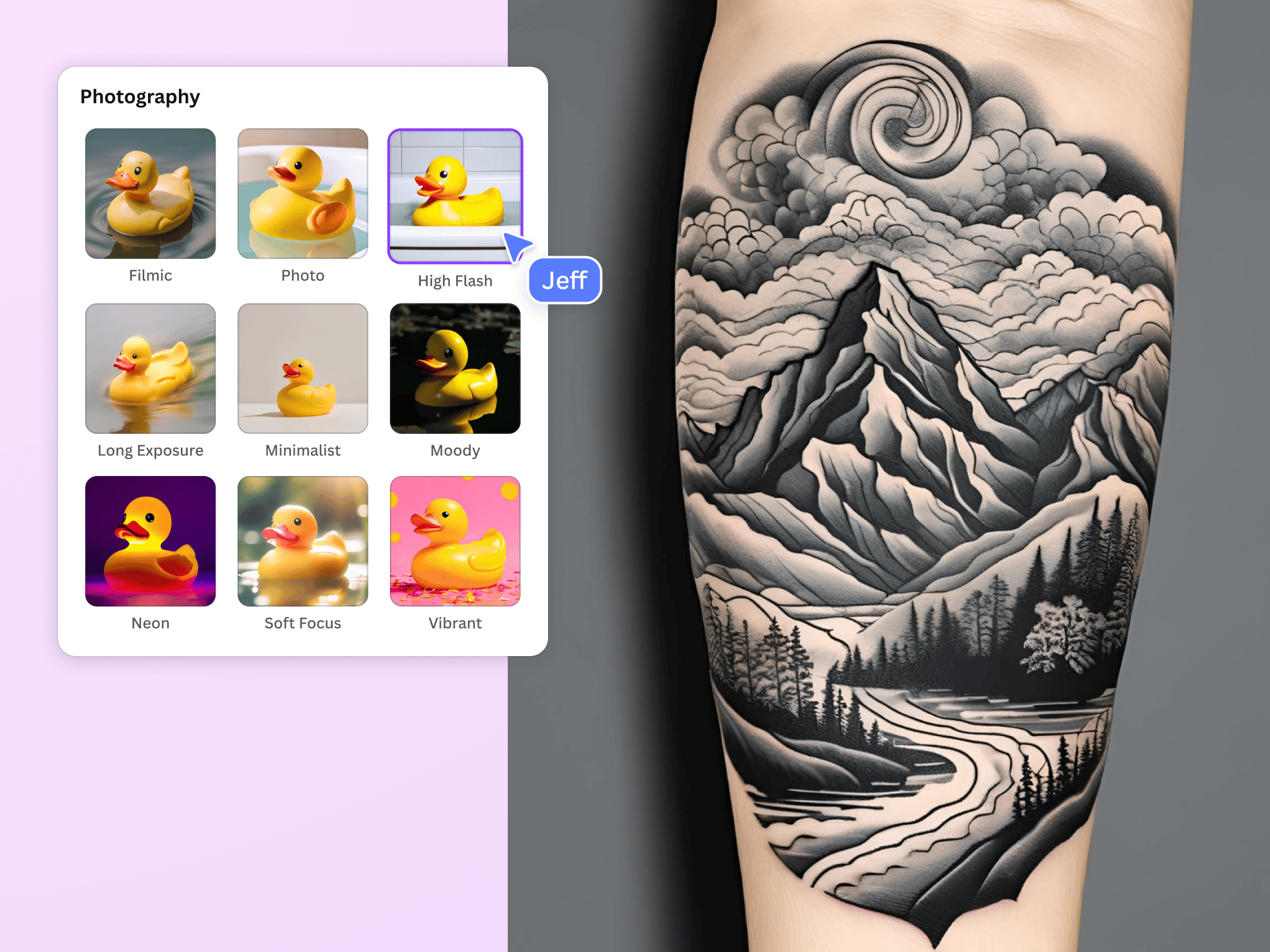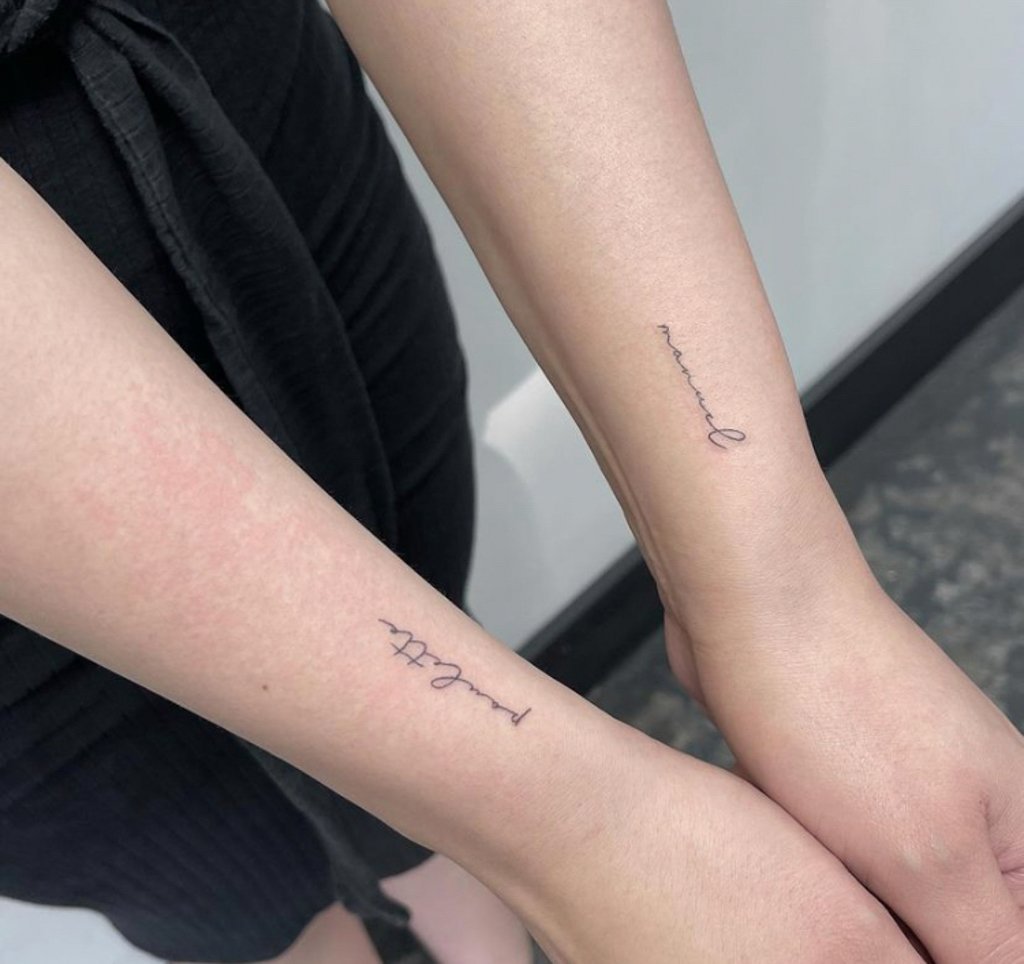25 Stunning Fine Line Tattoo Ideas That Will Transform Your Ink Game
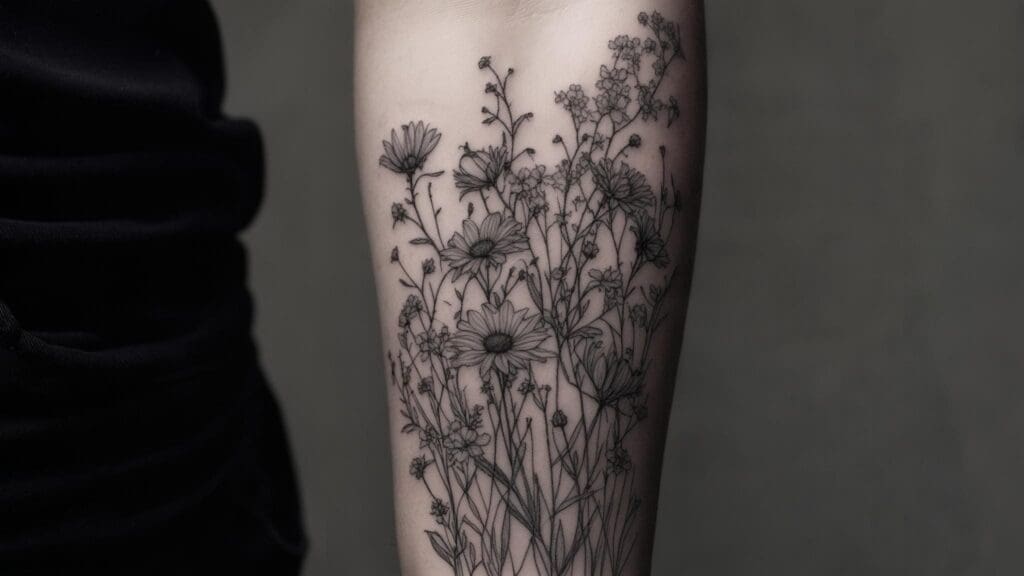
Fine line tattoos have exploded in popularity, with over 150 million views on TikTok videos showcasing these delicate designs. I remember scrolling through Instagram last year and being mesmerized by the intricate detail in a single-line mountain range tattoo – it was so different from the bold traditional pieces I’d seen before. According to InStyle, celebrities like Hailey Bieber and Kendall Jenner keep getting them, and artists at international tattoo studios confirm that fine line tattoos have become a major trend.
Source: instyle.com
You’re probably here because you’ve seen these stunning, minimalist designs and want to understand what makes them special. Fine line tattoos offer an elegant entry point into body art, using thin needles and precise techniques to create subtle, sophisticated pieces that age gracefully when done correctly.
This comprehensive guide breaks down 25 of the most popular fine line tattoo designs across five distinct categories, plus everything you need to know about choosing the right design, artist, and placement for your next piece. Understanding tattoo placement is crucial since fine line tattoos require specific considerations for optimal healing and longevity.
Table of Contents
- Essential Considerations for Fine Line Tattoos
- Top 25 Fine Line Tattoo Designs
- Nature and Botanical Designs
- Geometric and Abstract Designs
- Script and Lettering Designs
- Symbolic and Spiritual Designs
- Personal and Memorial Designs
- Applying Key Considerations to Design Categories
- Individual Design Analysis
- Bringing Your Vision to Life
- Final Thoughts
TL;DR
- Fine line tattoos use thinner needles and less ink, creating delicate designs that require expert artists and careful placement
- 25 top designs span nature/botanical, geometric/abstract, script/lettering, symbolic/spiritual, and personal/memorial categories
- Longevity varies by design complexity – simple geometric shapes age better than intricate details
- Artist selection is crucial since fine lines show mistakes more prominently than bold tattoos
- Placement on stable, low-movement areas prevents premature fading and blurring
- Skin type affects how fine lines heal – oily skin may cause faster blurring
- Size matters for detail preservation – complex designs need adequate dimensions to remain clear over time
Essential Considerations for Fine Line Tattoos
Before choosing your fine line tattoo design, you need to understand six critical factors that determine success: how these tattoos age over time, finding the right specialized artist, optimal body placement, skin type compatibility, balancing design complexity with size, and budget planning for potential touch-ups.
Fine line tattoos use single needles or small needle combinations with less ink saturation, making them more susceptible to fading and blurring after 5-10 years compared to traditional bold tattoos. Success depends heavily on artist expertise in delicate shading techniques, steady hand precision, and understanding how fine line tattoos heal differently across various skin types and body locations.
Source: inksoulsupply.com
Longevity and Aging Expectations
Fine line tattoos age differently than traditional bold pieces due to their thinner lines and reduced ink saturation. While they maintain their elegant appearance for years, you should expect some softening of details and potential need for touch-ups within 5-10 years, especially for highly detailed designs.
Thinner needles deposit less ink at shallower depths, making fine lines more vulnerable to natural skin cell turnover and UV exposure that causes gradual fading. Simple geometric designs and single continuous lines typically age more gracefully than complex botanical details or intricate script lettering.
| Design Complexity | Expected Aging Timeline | Touch-up Frequency | Longevity Rating |
|---|---|---|---|
| Simple geometric (arrows, crosses) | 8-12 years before noticeable softening | Rarely needed | Excellent |
| Medium detail (single roses, coordinates) | 5-8 years before detail loss | Every 5-7 years | Good |
| High detail (portraits, complex botanicals) | 3-5 years before significant changes | Every 3-5 years | Fair |
| Very high detail (realistic portraits, intricate mandalas) | 2-4 years before major softening | Every 2-4 years | Poor |
Artist Selection Criteria
Not every tattoo artist can execute fine line work successfully. You need someone with specialized skills in precision linework, experience with delicate shading techniques, and a portfolio showing healed fine line tattoos across different skin types.
Fine line execution requires exceptional hand steadiness and depth control since mistakes are immediately visible and difficult to correct without compromising the design’s delicate nature. Review portfolios specifically for healed fine line work (not just fresh tattoos) to assess how the artist’s technique holds up over time across various skin tones and textures.
When researching artists, Sarah found three candidates for her minimalist mountain range tattoo. Artist A showed only fresh fine line work in their portfolio, Artist B had healed photos but only on fair skin tones, while Artist C displayed healed fine line tattoos across various skin types with 2+ year aging examples. She chose Artist C, and her mountain range tattoo maintained crisp lines even after 18 months, while her friend who chose Artist A needed touch-ups after just one year.
When budgeting for your fine line piece, consider that tattoo costs can vary significantly based on artist expertise and design complexity.
Optimal Placement Strategies
Placement significantly impacts your fine line tattoo’s longevity and appearance. Choose areas with minimal movement, reduced friction exposure, and stable skin that won’t stretch significantly over time to preserve intricate details.
High-movement areas like fingers, hands, and joints cause fine lines to blur faster due to constant skin stretching and friction against clothing or surfaces. Flat, stable areas like the forearm, shoulder blade, or ribcage provide ideal canvases for maintaining precise line integrity and geometric accuracy over years.
Source: tattooing101.com
If you’re considering finger tattoos, be aware that these high-movement areas present unique challenges for fine line tattoo longevity.
Skin Type Compatibility
Your natural skin characteristics directly affect how fine line tattoos heal and age. Oily skin may cause lines to blur faster, darker skin tones might need technique adjustments for optimal contrast, and sensitive skin requires modified aftercare approaches.
Oily skin produces excess sebum that can interfere with ink retention during healing, potentially causing fine lines to spread or fade more quickly than on normal or dry skin types. Darker skin tones may require slightly thicker lines or adjusted ink density to ensure adequate contrast and visibility while maintaining the fineline tattoo aesthetic.
Top 25 Fine Line Tattoo Designs
These 25 carefully selected fine line tattoo designs represent the most popular and enduring options across five distinct categories. Each design balances aesthetic appeal with practical considerations like aging, placement flexibility, and execution difficulty to help you make an informed choice.
Design selection should prioritize longevity factors – simpler geometric forms and continuous lines typically maintain their appearance better than highly detailed botanical or portrait work. Size requirements vary significantly between designs, with complex patterns needing larger dimensions to preserve detail clarity while simple symbols remain effective at smaller scales.
Nature and Botanical Designs
Nature-inspired fine line tattoos capture organic beauty through minimalist interpretation. These five designs range from simple mountain silhouettes to detailed wildflower arrangements, offering options for different skill levels and size preferences while maintaining the delicate aesthetic that defines fine line work.
Botanical designs benefit from organic line flow that naturally masks minor aging effects, making them more forgiving than geometric patterns that show imperfections prominently. Plant-based motifs scale effectively across different body areas and complement natural body curves, particularly on shoulders, ribs, and limbs where organic shapes feel most natural.
Source: pinimg.com
For more inspiration on botanical designs, explore our collection of flower tattoo ideas that can be adapted to fine line techniques.
1. Minimalist Single-Line Mountain Range
This design creates mountain silhouettes using one continuous line, often wrapping around the wrist or forearm. The unbroken line forms 3-5 peaks with subtle height variations, making it perfect for beginners due to its low complexity and excellent aging characteristics.
Single continuous lines are among the most stable fine line designs because there are no connection points where ink might separate or blur over time. The flowing nature of mountain contours allows for flexible placement around curved body areas like wrists, ankles, or following the natural lines of the forearm.
2. Delicate Wildflower Bouquet
This medium-complexity design combines 3-5 different flower types with thin connecting stems and scattered small leaves. It uses dotwork for texture and minimal line shading for depth, requiring an artist with botanical knowledge and precision skills for proper execution.
Multiple flower elements require careful spacing to prevent lines from bleeding together as the tattoo ages, with minimum 4-inch height recommended for detail preservation. Botanical accuracy in petal shapes and stem proportions demands an artist experienced in organic forms rather than just geometric fine line work.
3. Geometric Tree of Life
This high-complexity design merges traditional tree symbolism with geometric precision, featuring a circular border containing stylized branches, triangular leaves, and mirrored root systems. Sacred geometry patterns within the trunk add spiritual significance while requiring mathematical accuracy.
Combining geometric precision with organic tree forms requires master-level expertise to maintain both mathematical accuracy and natural flow within a single design. Minimum 6-inch diameter necessary for geometric detail integrity, with placement limited to completely flat body areas for symmetrical execution.
4. Single-Stem Rose with Thorns
This classic design features a long-stemmed rose with 2-3 thorns and a single bloom outlined in fine lines. The medium complexity comes from executing organic curves skillfully, while the vertical linear format offers versatile placement options.
Rose petal curves require intermediate to advanced skill for smooth execution, as organic shapes are less forgiving than straight geometric lines. The vertical orientation makes this design adaptable to various body placements from small wrist pieces to larger forearm or thigh applications.
5. Constellation Map
Personal star constellations rendered as small dots connected by thin lines, often including birth dates in fine script. This low-complexity design offers excellent longevity due to its simple dot-and-line construction and high scalability for any size preference.
Dot and line combinations provide exceptional stability over time since there are no complex curves or detailed elements that can blur or lose definition. Constellation accuracy can be verified against astronomical charts, and the design works effectively on any body area, particularly shoulders or back for larger star maps.
Source: pinimg.com
Geometric and Abstract Designs
Geometric fine line tattoos emphasize mathematical precision and clean lines to create striking visual impact. These five designs range from simple arrows to complex mandalas, requiring varying skill levels but all demanding accuracy since geometric imperfections are immediately noticeable.
Geometric designs show aging effects more prominently than organic patterns because precise lines and angles make any blurring or shifting immediately apparent. Mathematical accuracy requirements mean these designs work best on flat, stable body areas where skin movement won’t distort the geometric relationships over time.
6. Sacred Geometry Mandala
This very high complexity design features concentric circles radiating from a central point, containing triangles, hexagons, and petal shapes with varying line weights. Strategic negative space creates visual breathing room, but the mathematical precision required makes this suitable only for master-level artists.
Mathematical precision requirements demand expert-level geometric knowledge and steady hand control, as even minor imperfections become magnified in symmetrical patterns. Minimum 6-inch diameter essential for detail clarity, with placement restricted to completely flat areas like the back or chest for accurate symmetrical execution.
Source: wixstatic.com
7. Minimalist Arrow Design
This low-complexity design uses a single straight line with triangular head and optional feather fletching details. Basic geometric skills are sufficient for execution, and the design offers outstanding longevity due to its simple construction and universal placement flexibility.
Simple geometric forms using primarily straight lines provide exceptional stability over time with minimal risk of blurring or distortion. Extreme versatility allows effective scaling from 1-6 inches and placement on virtually any body area without compromising the design’s visual impact.
8. Hexagonal Honeycomb Pattern
This medium-complexity design features 7-12 connected hexagons in cluster formation, with some filled with dotwork and others left empty. Consistent angle execution is required, but the geometric repetition helps mask minor aging effects over time.
Hexagonal patterns require intermediate precision for maintaining consistent 120-degree angles, but the repetitive nature allows small imperfections to blend into the overall pattern. Pattern density determines minimum size requirements, with individual hexagons needing adequate dimensions to remain distinct as the tattoo ages.
9. Linear Wave Pattern
This medium-complexity design uses 3-5 parallel curved lines that flow organically with varying lengths and amplitudes. Small dots between lines can represent particles or energy, and the design excels at following natural body curves for enhanced visual flow.
Organic wave flow requires artistic eye for natural curve progression while maintaining parallel line relationships throughout the design’s length. Exceptional adaptability to body contours makes this design particularly effective for wrapping around limbs or following natural muscle definition lines.
10. Geometric Animal Silhouette
This high-complexity design breaks down recognizable animals into triangular and linear components while maintaining identifiable form. The challenge lies in balancing geometric precision with anatomical accuracy, often using negative space to define features.
Requires dual expertise in both geometric precision and animal anatomy to create recognizable forms using only straight lines and angles. Minimum 4-inch dimension necessary for feature recognition, with contrast modifications potentially needed across different skin tones for optimal visibility.
Script and Lettering Designs
Fine line lettering demands typography expertise and consistent execution since text readability is paramount. These five designs range from single words to complex multi-line quotes, with longevity concerns increasing as letter complexity and quantity grow.
Fine script lettering faces unique aging challenges as thin letterforms may lose definition over time, potentially affecting readability more than decorative elements. Typography consistency becomes critical when multiple words or lines are involved, requiring artists with specialized lettering skills beyond general fine line expertise.
| Lettering Type | Skill Level Required | Aging Expectation | Minimum Size | Best Placement |
|---|---|---|---|---|
| Roman Numerals | Basic | Excellent (8-12 years) | 0.25″ height | Universal |
| Single Word Script | Intermediate | Good (5-8 years) | 0.5″ height | Forearm, ribs |
| Coordinates | Basic | Excellent (8-12 years) | 0.3″ height | Wrist, ankle |
| Multi-line Quote | Expert | Fair (3-5 years) | 1″ total height | Ribs, back |
| Signature Replica | Master | Variable | Original size | Depends on complexity |
11. Single Word in Fine Script
Meaningful words like “Breathe,” “Wanderlust,” or “Resilience” executed in flowing script font with medium complexity. Consistent letter spacing and flow are essential, with minimum 0.5-inch letter height recommended for aging considerations.
Typography expertise essential for maintaining consistent letterform proportions and spacing, as script fonts require understanding of how letters connect and flow together. Fine script may lose definition over 5-10 years, making font weight and letter size critical decisions for long-term readability preservation.
12. Coordinates in Minimalist Font
Geographic coordinates marking special locations, typically 8-12 characters with precise spacing in clean sans-serif font. Often includes small compass rose or location dot, with good longevity due to simple numeral construction.
Clean numerical forms maintain readability well over time since numbers use primarily straight lines and simple curves that resist blurring. Linear format provides versatile placement options while degree symbols and decimal points require careful sizing to remain visible as the tattoo ages.
13. Roman Numeral Date
Important dates like weddings, births, or memorials rendered in classic Roman numerals using straight line construction. This low-complexity design offers excellent longevity and universal placement flexibility due to its simple geometric nature.
Straight line construction provides exceptional stability over time, making Roman numerals one of the most age-resistant fine line lettering options. Basic geometric skills sufficient for execution, with the design scaling effectively from small discrete placements to larger statement pieces.
Source: pinimg.com
14. Inspirational Quote in Multiple Lines
Short meaningful phrases in 2-4 lines of consistent fine script, requiring high complexity due to composition skills and consistent lettering demands. Careful attention to line spacing and overall balance is essential for visual harmony.
Multiple fine lines may blur together over time, requiring substantial size commitment and expert typography skills for long-term readability. Composition expertise needed to balance text blocks visually while maintaining consistent lettering quality across all lines of the quote.
15. Signature Replication
Exact reproduction of loved ones’ signatures, requiring master-level precision for authentic replication. Complexity varies based on original signature characteristics, with size determined by signature features rather than personal preference.
Master-level precision required for accurate reproduction while adapting signature characteristics to fine line tattoo medium without losing authenticity. Original signature complexity directly determines aging expectations, with simple signatures lasting longer than elaborate ones with multiple flourishes.
Symbolic and Spiritual Designs
Spiritual and symbolic fine line tattoos carry deep personal meaning while offering varying complexity levels. These five designs range from simple crosses to multi-element chakra systems, with success depending on balancing symbolic accuracy with fine line execution requirements.
Symbolic designs often prioritize spiritual significance over optimal placement, requiring careful discussion about balancing meaning with practical longevity considerations. Cultural accuracy and respectful representation become important factors when working with spiritual symbols from various traditions.
Source: pinimg.com
Explore our comprehensive guide to spiritual tattoo ideas for more meaningful designs that work beautifully in fine line style.
16. Minimalist Cross Design
Simple perpendicular lines forming a cross with optional small decorative elements at the intersection. This low-complexity design offers outstanding longevity, universal placement flexibility, and works perfectly across all skin types.
Simple perpendicular line construction provides exceptional stability over time with minimal risk of distortion or blurring. Universal religious symbol requires respectful execution while offering complete flexibility in size scaling from tiny discrete pieces to larger statement designs.
17. Yin Yang with Fine Detail
Traditional circular symbol with fine line borders, small internal circles, and optional surrounding decorative elements. Medium complexity requires perfect symmetry and curve precision, with internal contrast potentially needing adjustment for visibility.
Perfect symmetry execution demands intermediate skill level for maintaining circular form and balanced internal element placement. Internal contrast between light and dark sections may require adjustment across different skin tones to ensure symbol remains recognizable over time.
18. Infinity Symbol with Personal Elements
Mathematical infinity loop enhanced with small hearts, names, dates, or symbols integrated into the curves. Medium complexity requires smooth curve execution and thoughtful element integration within the flowing design.
Smooth curve execution essential for maintaining infinity symbol’s flowing nature while integrating personal elements without disrupting the mathematical precision. Horizontal orientation requires appropriate body area selection, with additional elements needing careful size planning to remain visible as the tattoo ages.
19. Chakra Alignment Symbols
Seven traditional chakra symbols arranged vertically along spine placement, each rendered in fine lines with optional connecting lines. High complexity requires consistency across multiple detailed symbols and extensive vertical space.
Multiple small symbols may lose individual definition over time, requiring careful size planning and spacing to maintain distinct recognition of each chakra. Vertical spine alignment limits placement options while demanding advanced knowledge of spiritual symbol accuracy and proportional relationships.
20. Minimalist Angel Wings
Wing designs using curved lines to suggest feathers without heavy detail, requiring medium complexity for symmetrical organic curves. Wing span determines minimum width requirements while complementing most body contours naturally.
Symmetrical organic curve execution requires intermediate skill for maintaining wing proportion balance and feather suggestion without overwhelming detail. Wing span proportions determine minimum width requirements, with placement needing adequate space for proper wing relationship and visual impact.
Personal and Memorial Designs
Personal and memorial fine line tattoos carry the highest emotional significance, often prioritizing meaning over optimal placement or aging considerations. These five designs range from pet portraits to family trees, requiring sensitivity and advanced artistic skills.
Emotional significance often outweighs practical aging concerns, requiring honest discussions about realistic expectations for highly detailed personal imagery. Portrait and likeness work demands master-level artistic skills combined with fine line expertise, as recognition depends on precise feature capture.
When Mark wanted to honor his late grandmother, he chose to replicate her handwritten recipe card signature rather than a complex portrait. The fine line signature, executed at actual size by a master artist, maintained perfect readability after three years and serves as a daily reminder of her love through cooking. His friend’s choice of a detailed portrait required two touch-ups in the same timeframe and eventually needed conversion to a bolder style.
21. Pet Portrait Outline
Beloved pets rendered in simplified line art, capturing distinctive features through minimal lines while maintaining recognizable characteristics. High complexity requires artistic skill for likeness capture, with minimum 4-inch dimension recommended for feature recognition.
Likeness accuracy depends on capturing distinctive pet features through minimal line economy, requiring advanced portrait skills beyond general fine line expertise. Recognizable characteristics may soften over time, making size and placement critical decisions for maintaining emotional connection to the memorial piece.
Source: etsystatic.com
22. Heartbeat/EKG Line
Medical heartbeat rhythm lines with personal significance, often actual EKG readings from important events. Low complexity involves primarily jagged horizontal lines, with good aging characteristics due to simple line work construction.
Medical line pattern reproduction requires basic to intermediate precision for maintaining rhythm authenticity while adapting to tattoo medium. Linear design format offers flexible placement options while simple line construction provides good longevity expectations for this memorial style.
23. Minimalist Portrait Silhouette
Human profiles captured in single continuous lines, focusing on distinctive features like nose shape, hair line, or jawline. Very high complexity requires portrait skills and line economy, with substantial size commitment necessary for recognizable features.
Single continuous line portrait work demands master-level expertise in both portraiture and line economy to capture recognizable likeness. Facial recognition depends on precise line placement, making this among the most challenging fine line applications with significant size requirements for success.
24. Memorial Dates with Symbol
Birth and death dates or other significant date pairs in fine numerals, connected by meaningful symbols like hearts, crosses, or stars. Medium complexity requires thoughtful composition for visual balance and emotional impact.
Date numeral clarity essential for memorial significance, with symbol integration requiring careful composition balance for emotional resonance. Thoughtful layout design needed to create visual harmony between numerical elements and symbolic connectors while maintaining long-term readability.
25. Family Tree Branch
Single branch with small leaves or birds representing family members, with names or initials integrated into the design. High complexity requires balancing multiple elements harmoniously while potentially including birth dates or personal symbols.
Multiple family member representation requires advanced composition skills to balance individual elements within cohesive branch structure. Element quantity determines minimum size requirements, with each family member needing adequate space for recognition while maintaining overall design unity.
Source: pinimg.com
Applying Key Considerations to Design Categories
Each design category presents unique challenges when evaluated against the six essential considerations. Understanding how longevity, artist selection, placement, skin compatibility, complexity balance, and budget factors apply to different design types helps you make informed decisions about your fine line tattoo choice.
Category-specific challenges require targeted evaluation – geometric designs demand mathematical precision while botanical designs need organic flow expertise. Practical considerations like aging patterns and placement requirements vary significantly between categories, affecting both immediate execution and long-term satisfaction.
| Design Category | Average Longevity | Artist Skill Required | Best Placement Areas | Skin Type Considerations | Size Requirements |
|---|---|---|---|---|---|
| Nature/Botanical | 6-8 years | Intermediate | Curved areas (shoulders, ribs) | Forgiving across types | Medium (3-5 inches) |
| Geometric/Abstract | 4-6 years | Expert | Flat areas (back, chest) | Challenging on oily skin | Large (4-8 inches) |
| Script/Lettering | 5-7 years | Typography specialist | Stable areas (forearm) | Text clarity varies | Variable by word count |
| Symbolic/Spiritual | 7-9 years | Basic to intermediate | Universal flexibility | Generally adaptable | Small to medium (2-4 inches) |
| Personal/Memorial | 3-5 years | Master level | Meaning-driven choice | Highly variable | Large (4-6 inches minimum) |
Nature and Botanical Category Analysis
Botanical designs generally age well because organic line flow naturally masks minor blurring effects. These designs require artists with botanical knowledge and work excellently on curved body areas, scaling effectively from small to medium sizes across most skin types.
Organic nature of botanical elements provides forgiving aging characteristics as slight line blur mimics natural growth patterns rather than appearing as flaws. Curved body placement opportunities like shoulders and ribs complement organic shapes naturally while botanical accuracy requires specialized artistic knowledge beyond basic fine line skills.
Emma’s wildflower bouquet tattoo on her ribcage has aged beautifully over four years because her artist understood both botanical accuracy and how organic lines flow with body movement. The slight softening of petal edges actually enhanced the natural appearance, while her friend’s geometric honeycomb pattern showed obvious blurring in the same timeframe due to the precision required for angular shapes.
Geometric and Abstract Category Analysis
Geometric designs show aging effects more prominently due to precise line requirements, demanding mathematical precision and steady hands. They work best on flat, stable body areas and can be challenging on oily skin, with high detail requiring larger sizes for longevity.
Mathematical precision requirements make geometric imperfections immediately apparent, demanding expert-level accuracy and steady hand control throughout execution. Flat surface placement essential for maintaining geometric relationships, with oily skin presenting particular challenges for maintaining crisp line definition over time.
Source: boredpanda.com
Script and Lettering Category Analysis
Fine lettering faces unique readability challenges as thin letterforms may blur over time. These designs require typography expertise, work best in stable placement areas, and need careful size consideration for maintaining legibility across different skin textures.
Typography consistency becomes critical for multi-word designs, requiring specialized lettering skills beyond general fine line tattooing expertise. Readability preservation over time demands careful font weight and size decisions, with longer text requiring substantial size commitments for aging considerations.
Symbolic and Spiritual Category Analysis
Symbolic designs often prioritize spiritual significance over optimal placement, generally adapting well across skin types. Simple symbols age better than complex ones, and cultural knowledge may be required for respectful and accurate representation.
Spiritual significance often influences placement decisions over practical considerations, requiring honest discussions about balancing meaning with longevity expectations. Cultural accuracy and respectful representation become important factors when working with spiritual symbols from various traditions, demanding research and sensitivity.
Personal and Memorial Category Analysis
Personal designs carry the highest emotional significance, often outweighing aging concerns. These require portrait skills and emotional sensitivity, with placement frequently chosen for personal meaning rather than optimal healing, demanding careful size and detail planning.
Emotional value often supersedes practical aging considerations, requiring honest discussions about realistic expectations for highly detailed personal imagery over time. Portrait and likeness work demands master-level artistic skills combined with fine line expertise, as recognition accuracy depends on precise feature capture and adequate sizing.
Source: pinimg.com
Individual Design Analysis Against Key Considerations
Each of the 25 designs presents unique challenges and advantages when evaluated individually against longevity, artist requirements, placement needs, skin compatibility, size balance, and complexity factors. This detailed analysis helps you understand specific considerations for your chosen design.
Individual design evaluation reveals specific technical requirements and aging expectations that may not be apparent from category-level analysis alone. Design-specific factors like minimum size requirements, placement limitations, and artist skill levels vary dramatically even within the same category, affecting both execution and long-term satisfaction.
Nature and Botanical Individual Analysis
Within botanical designs, mountain ranges offer excellent longevity with basic skill requirements, while wildflower bouquets need advanced botanical knowledge and larger sizes. Tree of life designs demand master-level geometric precision, roses require intermediate organic curve skills, and constellations provide exceptional stability with universal placement flexibility.
Simple continuous line designs like mountain ranges provide exceptional aging stability while complex botanical arrangements like wildflower bouquets require minimum 4-inch heights for detail preservation. Constellation maps offer the most versatile placement options and aging characteristics within this category, while geometric tree designs demand the highest skill levels and size commitments.
Geometric and Abstract Individual Analysis
Sacred geometry mandalas require master-level expertise and large sizes, while minimalist arrows offer outstanding longevity with basic skills. Honeycomb patterns mask aging through repetition, wave patterns excel at body contouring, and geometric animals balance precision with anatomical knowledge.
Mandala complexity demands 6+ inch diameters and completely flat placement areas, while simple arrows provide exceptional versatility from 1-6 inches on any body location. Wave patterns offer unique body contouring advantages while geometric animals require dual expertise in both mathematical precision and anatomical understanding for recognizable results.
Source: pinimg.com
Script and Lettering Individual Analysis
Single words in script face moderate aging challenges with typography demands, while coordinates offer good longevity with simple numerals. Roman numerals provide outstanding stability, multi-line quotes require substantial size commitments, and signature replications demand master-level precision for authenticity.
Roman numerals offer the most age-resistant lettering option due to straight-line construction, while multi-line quotes present the greatest aging challenges requiring substantial size commitments. Signature replication complexity varies directly with original signature characteristics, demanding exact reproduction skills while adapting to tattoo medium constraints.
Symbolic and Spiritual Individual Analysis
Minimalist crosses offer outstanding longevity with universal flexibility, yin yang symbols require perfect symmetry, infinity designs need smooth curves, chakra alignments demand consistency across multiple elements, and angel wings require symmetrical organic execution.
Simple cross designs provide the most stable and versatile option within this category, while chakra alignments present the greatest complexity with multiple detailed symbols requiring individual attention. Yin yang and infinity symbols require intermediate precision for curve execution and symmetry maintenance, with internal contrast potentially needing skin-tone adjustments.
Personal and Memorial Individual Analysis
Pet portraits face recognition challenges over time, heartbeat lines offer good stability, portrait silhouettes demand master-level skills, memorial dates provide balanced composition needs, and family trees require multiple element harmony with substantial size requirements.
Portrait work (both pet and human) presents the greatest technical challenges within this category, requiring master-level artistic skills and substantial size commitments for feature recognition. Heartbeat/EKG lines offer the most stable aging characteristics within personal designs, while family trees demand advanced composition skills for balancing multiple family member representations.
Source: pinimg.com
Bringing Your Vision to Life with Tattoo Generator IQ
Choosing the perfect fine line tattoo design can feel overwhelming when trying to visualize how your concept will translate into actual ink. Tattoo Generator IQ’s AI-powered platform bridges this gap by generating professional-quality concepts in seconds, allowing you to explore multiple variations and refine details before meeting with your artist.
AI-generated concepts eliminate communication gaps between client vision and artist interpretation, providing clear professional references that accurately represent your ideas for better consultation outcomes. High-resolution output ensures delicate fine line details remain crisp and clear when presented to tattoo artists, while multiple variation generation helps explore different approaches to size, detail level, and compositional arrangements.
Source: canva.com
The platform excels particularly for fine line tattoos, where precision and proportions are critical to final results. You can specify size preferences, style nuances, and personal meaning elements, then refine generated designs until they match your vision perfectly.
Whether you’re exploring your first fine line tattoo or adding to an existing collection, AI-generated concepts save consultation time and costs while ensuring you walk into the tattoo shop with clear, professional references. Remember that while AI helps visualize and refine ideas, the final magic happens when a skilled fine line artist brings your design to life on your skin.
Ready to explore your fine line tattoo possibilities? Try Tattoo Generator IQ today and transform your vision into a professional design concept that communicates your ideas clearly to any tattoo artist.
Final Thoughts
Fine line tattoos represent a perfect intersection of artistic precision and personal expression, offering elegant alternatives to traditional bold designs. The 25 designs covered in this guide provide options for every skill level, placement preference, and personal meaning, from simple geometric arrows to complex mandala patterns.
Success with fine line tattoos depends heavily on understanding the unique considerations these delicate designs require. Artist selection becomes paramount since mistakes show prominently, placement affects longevity significantly, and size planning determines whether intricate details will remain clear over time.
Your skin type, lifestyle, and long-term expectations all play crucial roles in design selection and placement decisions. While some designs like Roman numerals and simple crosses offer exceptional aging characteristics, others like detailed portraits or multi-line quotes require substantial size commitments and expert execution for lasting satisfaction.
Fine line tattoo success requires balancing aesthetic desires with practical considerations like aging expectations, artist expertise availability, and optimal placement for your lifestyle and body type. Investment in proper artist research, adequate sizing, and appropriate placement pays dividends in long-term satisfaction, while rushing decisions or compromising on key factors often leads to disappointment and costly touch-up requirements.
Source: squarespace-cdn.com
For those considering their first tattoo, our guide to simple tattoo ideas offers beginner-friendly options that work beautifully in fine line style.
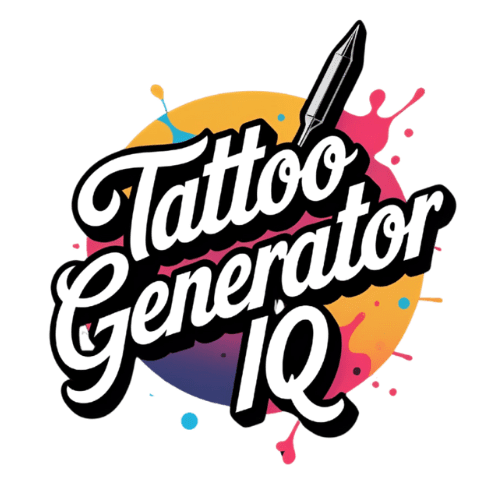
:max_bytes(150000):strip_icc()/090122-Fine-Line-Tattoos-Social-2000-5f4eaa66aa324099b22e499e376de875.jpg)
